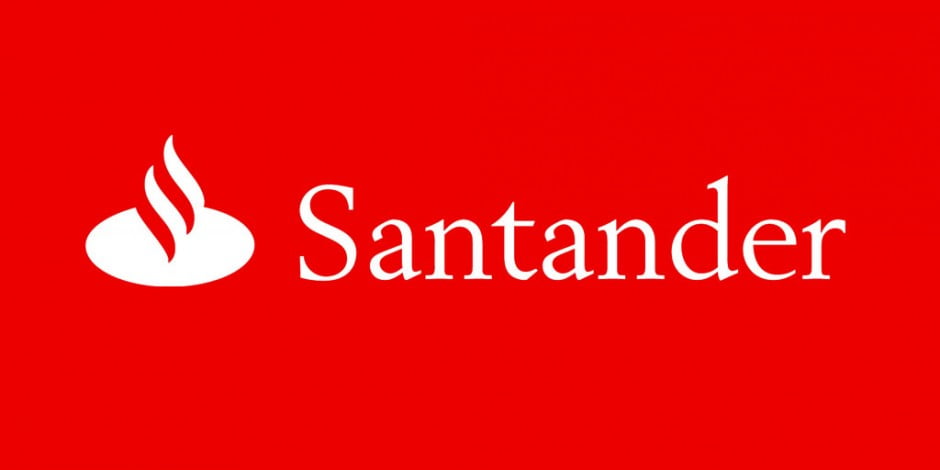
The social media strategy at Santander UK isn’t concerned with fan growth or sharing a quirky promotional post. Instead, the focus is on understanding how people might bank or use chatbots on social networks that command more of their time online.
Likes, retweets and followers might be the gauge of a successful social media campaign to some marketers but for Keith Moor they are unnecessary. To Santander UK’s chief marketing officer, success is more about what are the experiences people are having within a particular channel and “much less about fan growth”.
Teens now spend up to nine hours a day on social platforms, according to Global Web Index, while 30% of all time spent online is now allocated to social media interaction. So, if a person is more likely to be on Facebook when they need to check their account, then Santander wants to be the bank that lets them do that.
It “really won’t be just about social channels being places where people go to do ‘social stuff’,” says Moor of why this shift is so important for the bank. “They’re living their lives through those platforms and so we need to be in those places too,” he continues. “Why would someone bother coming out of an app when they can do most of their stuff within the app experience. We need to be part of that ecosystem.”
How Santander does this is still being mapped out and Moor admits there will be mistakes along the way. However, with social media budgets on the up at the bank thanks to redirected funds from print, the senior marketer wants the medium to play a bigger role in driving customer loyalty. Customer growth “isn’t really a primary focus” for the financial firm, which is why Moor won’t splash the cash on promotional posts and big social media campaigns to raise awareness. Rather, he sees Santander’s money going on chatbots, social banking and other services that could fit seamlessly into the way people behave on social networks.
Social media is not a promotional strategy at Santander, it’s about understanding what ‘punters’ want online
Whether someone is transferring money, paying a credit card bill or voicing their frustrations about certain services, knowing what features to offer customers and where requires more than just a bigger budget. It’s why Moor has recruited more people into the team to work on social media. Over time, he envisages a team bereft of social media experts for one where the responsibility for it is shared by all his marketers. By that same notion, he argues that the agencies he works with will have to treat the medium as a standard part of what they offer. “I want the agencies I’m working with – my main strategic partners – to have social baked into the heart of what they’re doing,” he demands. “And so that’s why in the teams that we have at Engine as well as Dentsu and Carat, the social infrastructure is part of the main team and isn’t a little bit on the side”.
Compliance, security and privacy will be top of mind for both brand and agencies’ attempt to balance the need to protect people’s money with making them feel more empowered. Moor hints at the scale of the challenge ahead when talking about why Santander has been coy to move into mobile messaging. The rewards of having such a personalized dialogue with a customer are clear but so too is the security risk should the correct policies not be in place.
There’s “not much opportunity to use them [mobile messaging apps] now,” admits Moor. “Having said that we do have to find a way to exist on platforms like WhatsApp. The problem for us is the security angle; for banks that’s a big red herring. Many of the apps have a two-stage identification process and we need a bit more security than perhaps if someone were to buy a coat for example. People are very conscious of being secure with their money. It’s a fundamental part of what people like to keep private so we have to weight that up against people’s desire to do things in a more convenient manner.”
Changes on this scale will inevitably mean Santander ‘in-houses’ more of what it once briefed out to agencies. Yet, Moor is adamant this will help both brand and agency for the better even though some observers might argue it’s merely a chance to shave further costs amidst downward pressure on marketing budgets.
“My [marketing] budget hasn’t grown over the last few years, if anything it’s gone down like most marketers’ budgets have,” admits Moor. Effectively, Santander only does “TV advertising, digital and social” now, he continues.
The reason “why [social media] gets more money is because we can prove that the engagement levels are versus other channels and opportunities where perhaps you’re perceiving that a lot of people are getting our messages but maybe they’re not and you can’t tell which ones and which ones aren’t,” he continues.
As true as it might be that Santander can show the effectiveness of social media, it is still a way from knowing the real value of its efforts on the likes of Facebook and Twitter. Traditional media equivalency measures won’t cut it moving forward, explains Moor, who believes it will come down to untangling the reams of data he says social platforms will share. Santander is getting to the point “where we need to understand the real value of doing something [on social media], he adds. “It’s no good, for arguments sake, going ‘I can get reach easily on here versus over there’. That doesn’t really matter. What I need to know is do my customers like me more? Do they feel happier with us? And do they want to stay longer as a result of the interactions they’re having”.
Moor didn’t offer much more as to how this will be achieved, in part because the business is still getting its head around measurement. Sales won’t be an indicator because banks “are never going to see a massive growth in sales directly off channels”.
The promise of better measurement becomes all the more important amid the advent of so-called ‘open banking’, whereby banks will have to share data that they have historically held. The rationale behind the Open Banking Standard is that the customer experience should improve as a result of the data being used to build better applications and resources. Moor agrees, though admits there will be challenges ahead.
[Source”timesofindia”]






